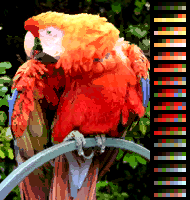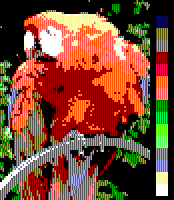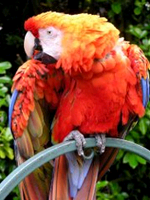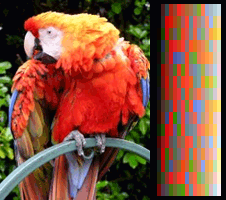List of 16-bit computer color palettes
This is a list of notable RGB hardware color palettes used on 16-bit computers, which were primarily manufactured from 1985 to 1995. Due to mixed-bit architectures, the n-bit distinction is not always a strict categorization.
Sample image Color test chart 12-bit, 4096-color palette 15-bit, 32768-color palette 

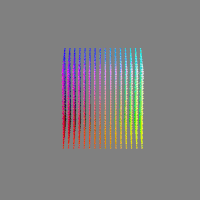
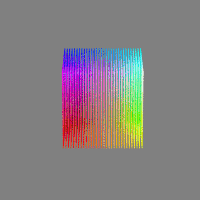
| 12-bit, 4096-color palette | 0x00 | 0x01 | 0x02 | 0x03 | 0x04 | 0x05 | 0x06 | 0x07 | 0x08 | 0x09 | 0x0A | 0x0B | 0x0C | 0x0D | 0x0E | 0x0F |
|---|---|---|---|---|---|---|---|---|---|---|---|---|---|---|---|---|
| 15-bit, 32768-color palette | 0x00 | 0x01 | 0x02 | 0x03 | 0x04 | 0x05 | 0x06 | 0x07 | 0x08 | 0x09 | 0x0A | 0x0B | 0x0C | 0x0D | 0x0E | 0x0F |
| 0x10 | 0x11 | 0x12 | 0x13 | 0x14 | 0x15 | 0x16 | 0x17 | 0x18 | 0x19 | 0x1A | 0x1B | 0x1C | 0x1D | 0x1E | 0x1F |
Atari
ST series
The Atari ST series has a digital-to-analog converter of 3-bits, eight levels per RGB channel, featuring a 9-bit RGB palette (512 colors). Depending on the (proprietary) monitor type attached, it displays one of the 320×200, 16-colors and 640×200, 4-colors modes with the color monitor, or the high resolution 640×400 black and white mode with the monochrome monitor.
2 colors 4 colors 16 colors 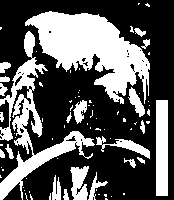
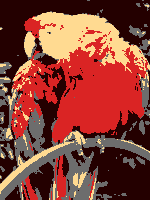

- 2-color mode color values:
0 – black 1 – [user-defined]
The STE series has a digital-to-analog converter of 4-bits, sixteen levels per RGB channel, featuring a 12-bit RGB palette (4096 colors) (similar to the Commodore Amiga).
Commodore
Amiga OCS
The Original Chip Set (OCS) of the Commodore Amiga features a 12-bit RGB, 4,096-color palette. As the Amiga Copper programmable graphics coprocessor is capable of changing color lookup table entries on the fly during display, in practice the number of distinct colors visible on-screen may exceed static color lookup table sizes documented here.
5-bit
The picture is divided in a series of bit planes, between 1 and 6 for horizontal resolutions of 320 (or up to 384 with overscan), and between 1 and 4 for horizontal resolutions of 640 (or up to 768 with overscan). For either horizontal resolution, the vertical resolution is either 200 (or up to 240 with overscan), or 400 (or up to 480 with overscan) if interlaced, for NTSC-compatible video modes; or 256 (or up to 288 with overscan), or 512 (or up to 576 with overscan) if interlaced, for PAL-compatible video modes. The color lookup table has up to 32 entries. So the different indexed color modes are from 1 to 5 bits pixel depth, 2-, 4-, 8-, 16- or 32-color out of 4,096.
2 colors 4 colors 8 colors 16 colors 32 colors 



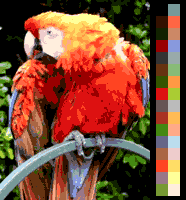
6-bit
When the sixth bit-plane is used, two extra color modes can be set: Extra Half-Brite (EHB) and Hold-And-Modify (HAM).
In the EHB mode, when the sixth bit is set to on for any given pixel, the display hardware halves the brightness of said pixel. This allows the Amiga to display 64 colors instead of the standard 32, with the caveat being that the 32 extra colors cannot be arbitrarily selected, and must be darker versions of those already being displayed on screen
In the HAM mode, the two higher bits of the 6-bits pixels are used as a four state command. Three of the states changes only the red, green or blue component of the pixel respect of the precedent in the scan line, and hold the other two RGB components. The new value for the modified color component is in the four lower bits. The remaining command state forces the pixel value to be one of the 16 first values of the palette, whose indice is in the four lower bits of the pixel. So it is very important to have a well selected palette, or the color will spread easily among consecutive pixels in the scan line of the image. This mode can display all of the 4,096 colors simultaneously.
64 colors (EHB mode) 4096 colors (HAM mode) 

Amiga ECS
Apple
Apple IIGS
Apple IIGS, along with full compatible graphic modes with the Apple II, features a custom Video Graphics Chip (VGC)[1] which supports a 12-bit RGB, 4,096-color palette. It has an extended set of 320×200 and 640×200 graphic modes, (called Super High-Res modes by Apple) with different (and a bit complex) color modes:
- 320×200 with 16 palettes of 16 selected colors out of 4,096 each. Every single scan line can be assigned to one of the sixteen palettes, so it can have up to 16×16=256 different simultaneous colors (although some common colors like black and white are usually shared among the different palettes, giving fewer than 256 total different colors). The most simple way to use this mode is having a unique 16-color selection for the entire screen and assign it to all scan lines. Here are shown the sample image both using a single shared palette and using all the 16 palettes (in this case, by dividing the image into 16 strips):
- 640×200 with 16 palettes of 8 selected colors out of 4,096 each. Every single scan line can be assigned to one of the sixteen palettes, so it can have up to 8×16=128 different simultaneous colors (usually less due to shared colors). In a single scan line, even column pixels can have one of the first four colors of the line's assigned palette, and odd column pixels one of the last four colors of the eight. The most simple way to use this mode is having a unique 8-color selection for the entire screen with four duplicate colors (the same to both even and odd pixel columns) and assign it to all scan lines. Here are shown the sample image both with a single shared custom 4-color palette and with a single 8-color palette (black, blue, yellow, white, black (again), red, green, white (again)) to produce 13 dithered-by-hardware colors, ("dark blue", "dark yellow", "gray", "dark red", "magenta", "orange", "light red", "dark green", "cyan", "lime green", "light green", "light blue", and "light yellow") plus pure black and white. The last was the Apple IIGS Finder default mode and palette.
Also, along with the one of 16 palettes, to each scan line the Apple IIGS VGC is able to assign individual 320 or 640 horizontal resolution independently. The closest output would be:
| 0x0 | 0x1 | 0x2 | 0x3 | 0x4 | 0x5 | 0x6 | 0x7 | 0x8 | 0x9 | 0xA | 0xB | 0xC | 0xD | 0xE | 0xF |














